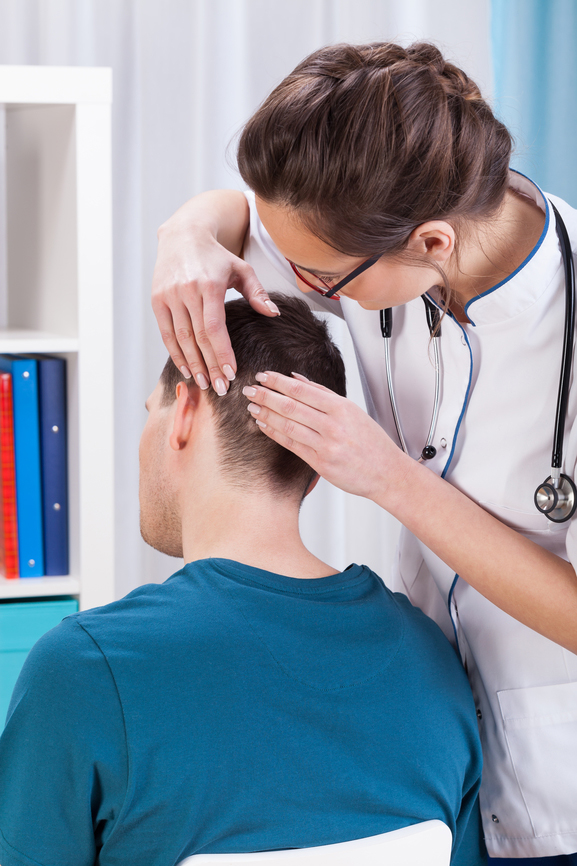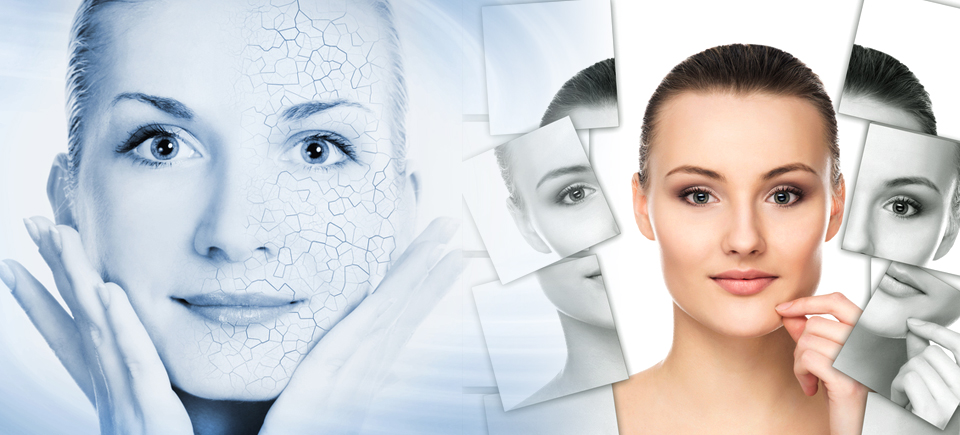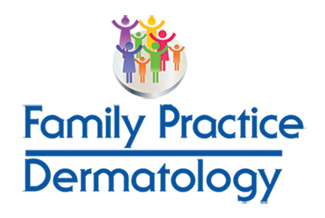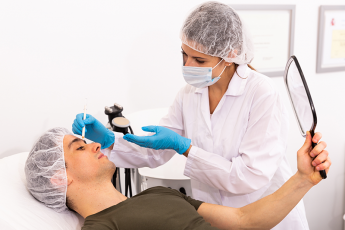
 Dermatology Doctors Fort Lauderdale Broward County Florida. Dr. Julie Omran DNP, FNP-BC is an experienced board certified family nurse practitioner. She specializes in clinical and cosmetic dermatology, with a focus on autoimmune skin conditions, skin cancer screening and esthetic enhancement with Botox and dermal fillers. She has a particular interest in treating patients with advanced psoriasis and eczema. Dr. Omran is passionate in her practice of general and cosmetic dermatology, and is committed to providing her patients with the most attentive and highest-quality patient care.
Dermatology Doctors Fort Lauderdale Broward County Florida. Dr. Julie Omran DNP, FNP-BC is an experienced board certified family nurse practitioner. She specializes in clinical and cosmetic dermatology, with a focus on autoimmune skin conditions, skin cancer screening and esthetic enhancement with Botox and dermal fillers. She has a particular interest in treating patients with advanced psoriasis and eczema. Dr. Omran is passionate in her practice of general and cosmetic dermatology, and is committed to providing her patients with the most attentive and highest-quality patient care.
 Dermatology Family Doctors In Plantation Florida Dr. Jeffrey D. Greiff and Dr. Julie Omran provide each patient in the South Florida area expert cosmetic and medical dermatological care in a professional and comfortable environment. Using state-of-the-art equipment and techniques to improve the health and appearance of skin, we will formulate and implement an optimized treatment plan to maximize results yet minimize risk. We will help you look and feel your best. Whether you need a full body skin exam, or just want a more youthful and glowing appearance, our caring and professional staff is here for all your skin care solutions. Our office is conveniently located in Plantation, Florida.
Dermatology Family Doctors In Plantation Florida Dr. Jeffrey D. Greiff and Dr. Julie Omran provide each patient in the South Florida area expert cosmetic and medical dermatological care in a professional and comfortable environment. Using state-of-the-art equipment and techniques to improve the health and appearance of skin, we will formulate and implement an optimized treatment plan to maximize results yet minimize risk. We will help you look and feel your best. Whether you need a full body skin exam, or just want a more youthful and glowing appearance, our caring and professional staff is here for all your skin care solutions. Our office is conveniently located in Plantation, Florida.
6782 W Sunrise Blvd, Plantation, FL 33313
(954) 583-4647 Fax: (954) 583-8280
We believe that everyone should enjoy healthy and beautiful skin! Call today at 954-583-4647 to schedule an appointment with Dr. Omran.
We provide patients with the highest possible level of care. We strive to be leaders in the management of skin disease and skin health by maintaining professional excellence and providing outstanding service.
Our areas of practice include:
Acne
Acne is the term for the blocked pores, pimples, and deeper lumps that can appear typically on the face, neck, chest, back, shoulders and upper arms. Acne is the most common skin disease in the country, affecting mostly teenagers, although patients of all ages can suffer from this condition. Treatment for acne may include topical medications, antibiotics, and Accutane.
Accutane
Moderate to severe acne.
Actinic Keratosis Treatment
Actinic keratoses (AKs) are lesions on the surface layer of the skin (epidermis) caused by chronic exposure to sunlight, most commonly appearing on the face, neck, arms and hands. Lesions range in size and may be yellow, brown, red or violet, smooth, wrinkled or furrowed. They may signal the onset of skin cancer and should be promptly treated.
Age Spots
Age spots, also called liver spots, are flat brown patches on the skin that have darkened in color after exposure to sunlight or ultraviolet light. They are commonly seen in people over the age of 40 on areas of skin that are frequently exposed to sunlight, such as the hands, shoulders, forearms, face and forehead. Age spots may look unattractive, but are usually painless and harmless.
Atopic Dermatitis
Atopic dermatitis, a form of eczema, is a chronic skin disorder that causes dry, itchy skin and often results in a red rash on the face, neck, arms and legs. It is most common in babies and children, although the actual cause is unknown. It is usually mild and can go away on its own, or can be managed through moisturizing lotions, avoiding harsh soaps and controlling scratching.
Complexion Care
Care of oily, dry, sensitive and sun damaged skin.
Eczema Treatment
Eczema is a group of inflamed skin conditions that result in chronic itchy rashes and affect about 15 million people in the US, including 10-20 percent of all infants. Symptoms often include dry, red, itchy patches on the skin which break out in rashes when scratched. Treatment involves the restriction of scratching, use of moisturizing lotions or creams, cold compresses and anti-inflammatory creams and ointments.
Folliculitis
Folliculitis is the inflammation of hair follicles that can occur anywhere on the skin as a result of the bacteria Staphylococcus aureus, which enters the body through tiny breaks in the skin. Symptoms of folliculitis include itchy skin, rash/reddened areas of skin and pustule development. Proper skin care, topical antiseptics and over-the-counter antibiotics are common treatments for folliculitis.
Hair Loss
Hair loss can occur as a result of aging, heredity, medications or an underlying medical condition, and can affect men and women of all ages. It may leave you with pattern baldness, patchy spots or thinned hair. Most people are troubled by this undesired change to their appearance and seek treatment in the form of medication, wigs, hair transplant or scalp reduction surgery.
Herpes
Herpes is a common viral infection that causes small blisters to appear on the skin of the face or genital area after encountering skin or sexual contact with an infected person. Patients may develop primary infections that heal completely or recurrent infections that come and go over time after exposure to certain triggers. While there is no cure for recurring herpes, treatments such as anti-viral medications can relieve symptoms during an outbreak.
Hirsutism
Hirsutism is a hormonal condition involving excessive body hair in women that develops due to high levels of male hormones called hirsutism. This condition may develop in patients with polycystic ovary syndrome, Cushing’s syndrome or from certain medications. Treatments aim to remove body hair through electrolysis or laser therapy and prevent additional growth through oral contraceptives or anti-androgens.
Moles
Moles and other birthmarks are benign pigmented spots or patches of skin that are usually brown or black in color. Though most moles are harmless, they may eventually develop into cancer.
Nail Disease
There are several different diseases that affect the nails, often as a result of a fungal or bacterial infection. Ingrown toenails involve the corners of the nails digging into the surrounding soft tissue, causing irritation and swelling, while fungal infection affects the toenails as a result of exposure to a warm, moist environment. Treatment for nail diseases may include oral or topical medications.
Pityriasis Rosea Treatment
Pityriasis rosea is a skin rash that appears on the chest, abdomen or back and resembles the shape of a tree as it grows. This condition most often affects patients between the ages of 10 and 35, although the specific cause is unknown. Most cases of pityriasis rosea clear up on their own within four to six weeks.
Psoriasis Treatment
Psoriasis is a group of chronic skin disorders that cause itching and/or burning, scaling and crusting of the skin. The most commonly affected areas are the scalp, elbows, knees, hands, feet and genitals. Psoriasis cannot be cured, but can be managed successfully through topical medications, and oral or injectable medications.
Rosacea
Rosacea is a chronic skin disease that causes redness and swelling on the face, scalp, neck, ears, chest, and other areas. Symptoms range from red pimples, lines and visible blood vessels to dry or burning skin and a tendency to flush easily. Rosacea typically appears in light-skinned, light-haired adults aged 30-50. Treatment aims to relieve symptoms and may include topical and oral medications, laser therapy or laser surgery.
Scabies Treatment
Scabies is a contagious skin infection caused by tiny mites that lay eggs within the top layer of the skin, which can be transmitted from person-to-person through skin or sexual contact. Patients with this condition often experience itchy red bumps or blisters that most commonly appear on the hands or feet. Treatment for scabies often includes a medicated cream or lotion to kill mites.
Seborrheic Dermatitis Treatment
Seborrhea is a chronic skin condition of unknown origin which causes scaling, oiliness and redness of the skin, most commonly on the scalp, face, ears, navel and genitals. Although symptoms imply that skin is dry, seborrhea actually involves excess oil production in the glands. Treatments often include cortisone creams and lotions in combination with frequent gentle washing and avoidance of harsh or perfumed soaps.
Skin Cancer Treatment
Skin cancer refers to the abnormal, uncontrolled growth of skin cells. The most common types of skin cancers include basal cell carcinoma, squamous cell carcinoma and melanomas. Risk factors include pale skin, family history of melanoma, being over 40 years old, and regular sun exposure. Fortunately, skin cancer is almost always curable if detected and treated early.
Skin Tags
A skin tag is a common type of skin growth that looks like a piece of hanging skin and most often develops on the neck, underarms, eyelids and under the breasts often as a result of clothing rubbing against the skin. While skin tags are not cancerous and don’t cause problems unless they are continuously irritated, many people choose to have them removed through freezing, burning or surgical excision.
Sun Protection
Sun damage can affect any area of your skin and can also lead to premature aging and skin cancer. The best treatment against sun damage is preventing it from occurring in the first place. It is important to wear sunscreen lotion on a daily basis and avoid excessive exposure to the sun, especially during mid-day hours when the sun is strongest.
Tinea Versicolor
Tinea versicolor is a fungal infection of the skin that appears as small, flat spots on oily areas such as the chest and back. These spots develop as a result of a change in the balance of common fungi, most often affecting those with oily skin or who use certain medications. Tinea versicolor can be easily treated through skin creams, shampoos or solutions, although anti-fungal medications may be needed in some cases.
Vitiligo
Vitiligo is a skin condition involving a loss of melanin that occurs when the cells that produce this substance die or malfunction, resulting in increasing areas of depigmentation on the skin and hair. The specific cause of this condition is unknown, but is linked to immune system disorders or hereditary factors. Treatment depends on the severity of the condition but is often effective in relieving symptoms.
Warts
Warts are skin growths caused by viruses. Different warts respond to different treatments; some go away on their own. Salicylic acid products can help self-treatment of many warts by dissolving the keratin protein that makes up the wart and the dead skin above it. Others can be removed via liquid nitrogen freezing or different types of acids.
Botox
Minimize the appearance or formation of wrinkles.
Juvéderm
Softens deep folds and reduces wrinkles in the face.








